| Rubery
Owen (Warrington) Limited |
|
In 1939 Rubery Owen acquired
Electro-Hydraulics based in Warrington, makers of
undercarriages and hydraulic equipment for aircraft. In
March 1943 its engineering work was transferred to a new
company, Rubery Owen (Warrington) Limited, and its
machine shop was built beside the Electro-Hydraulics factory
in Liverpool Road, Sankey, Warrington. |
|
The company had a three-storey office
block, supported by steelwork produced by Rubery Owen’s
Structural Department. It rested on around 60 piles driven
30 feet into the ground.
The main workshop covered around 60,000
square feet, and was divided into three areas, road making
and material handling equipment, lathes, and front and rear
axle assemblies for motor vehicles, and for the company’s
Conveyancer fork lift trucks, built in the factory next
door.
There was also a toolroom, an inspection department,
stores, a maintenance department, light plate shop, joiners’
shop, a compressor house, and the constructional shop where
main frames, and thousands of fabricated parts were produced
each week. The shop was dominated by a large press brake. In
the yard stood the boiler shop, canteens, and kitchens. |
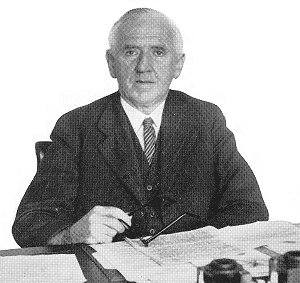
Mr. J. Pratt, Managing Director. From
the Christmas 1947 edition of the staff magazine "Yuletide". |
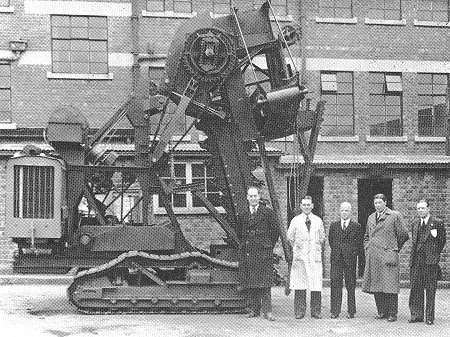
The first Barber-Greene Ditcher
produced by the company. From the summer 1951 edition of the
staff magazine "Goodwill". |
During the Second World War the factory
produced around 600,000 anti-aircraft and field gun shells,
mortar bombs, 11,000 Bailey bridge panels, 3,700 tail wheel
assemblies for heavy bombers, 2,500 castings for Bofors
guns, 2,300 axle and brake assemblies, and 600 paravanes.
The factory employed around 550 people,
under the leadership of Mr. J. Pratt, Managing Director, and
Mr. A. W. Hill, General Manager and Director. |
| One of the company’s products was a road-making machine
known as the Barber-Greene bituminous finisher which could
lay vast amounts of tarmac in a very short time.
They were originally used in this country for laying
aircraft runways during the Second World War. There were
only twenty one of them in the country, and because of the
high demand in North America, the Illinois-based
Barber-Greene company decided to concentrate on their home
market. |

A Barber-Green 879A Road Finisher.
From the summer 1951 edition of the staff magazine
"Goodwill". |
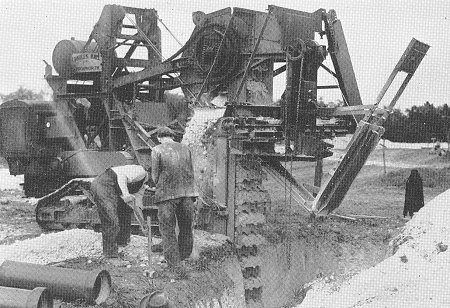
A Barber-Greene 44C Ditcher. From the
summer 1951 edition of the staff magazine "Goodwill". |
In 1946 Barber-Greene Olding & Company Limited, of
Hatfield, Hertfordshire, placed an order with Rubery Owen
which involved drastic modifications to the American design.
Soon a new version of the machine came into being, which was
manufactured in its entirety by Rubery Owen (Warrington)
Limited.
Other road-making machines including the Barber-Greene
Ditcher, and the Barber-Green Bucket Loader were produced by
the company. |
| Another of the company’s successful products was the
'Eaton' two-speed axle for heavy lorries, produced for the
Eaton Manufacturing Company of Cleveland, USA., and also
trailer axles produced for Trailmobile (Canada) Limited.
The factory also produced Harrison seven inch centre
lathes, most of which were exported to North America and
Canada.
Production ended in the late 1980s as a result of the
industrial recession. The company was finally dissolved
in 1993 when Rubery Owen moved away from manufacturing. |
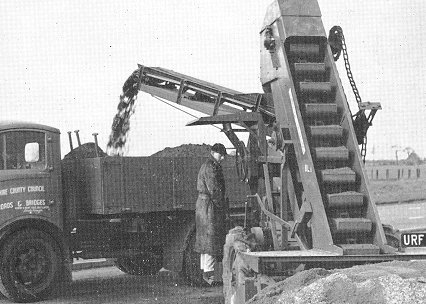
A Barber-Greene Model 522 Bucket
Loader. From the summer 1951 edition of the staff magazine
"Goodwill". |
|
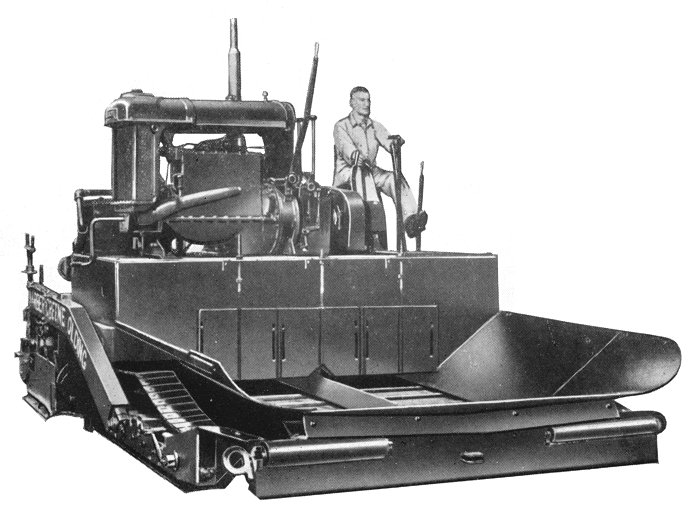
A Barber-Greene Olding bituminous
finisher for road maintenance. |
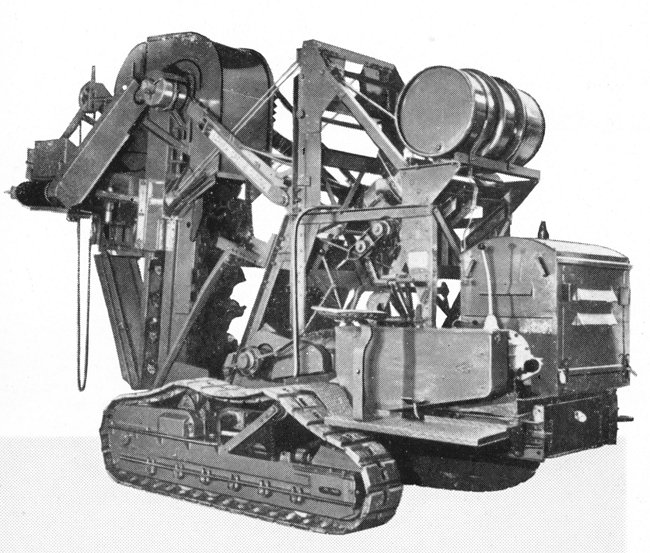
A Barber-Greene Olding Model 44C
vertical boom ditcher. It could cut trenches from 18 to
24 inches wide, and up to 8 ft. 3 inches deep. It was
powered by a Henry Meadows diesel engine. |
|
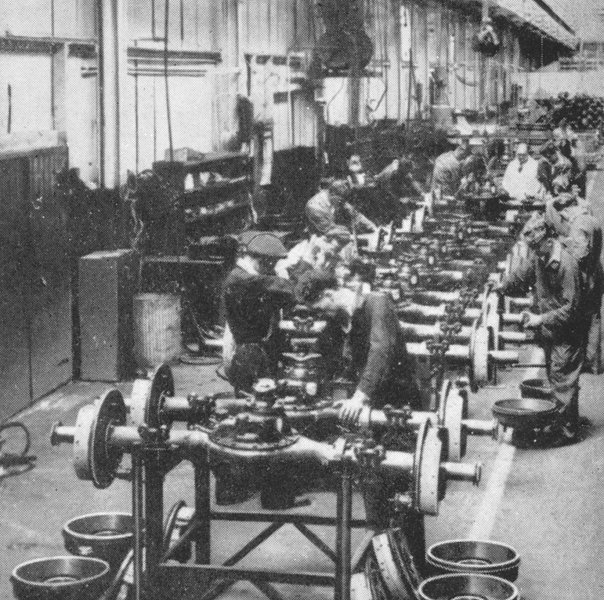
Production on a large scale of
'Eaton' 2 speed rear axles. |
| Another view of the 'Eaton' 2
speed rear axle production line. |
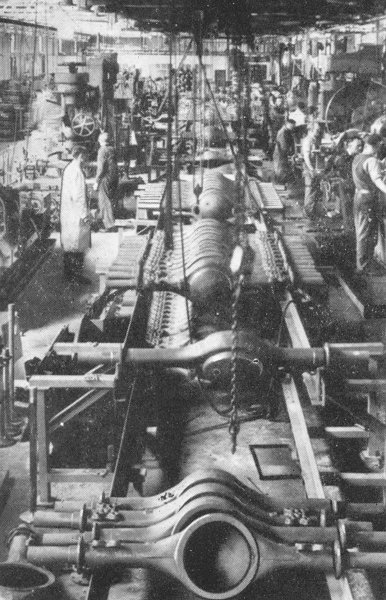 |
|
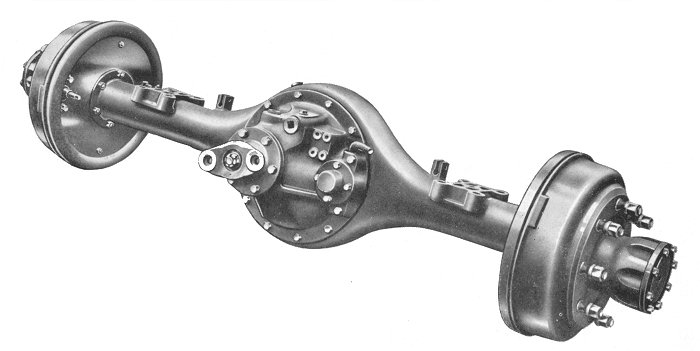
An 'Eaton' 2 speed rear axle. |
|

Another product, a rear axle for
taxis. |
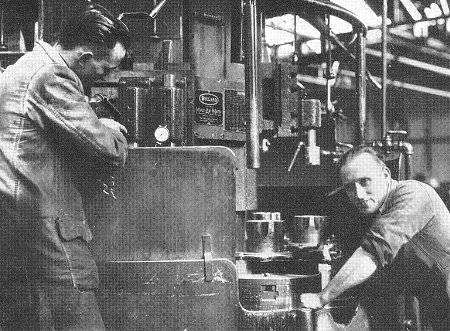 |
Jimmie Bennett, and Jimmie Norton
machining wheel hubs for Eaton axles.
From the Christmas 1947 edition of the
staff magazine "Yuletide". |
| A Harrison lathe being finally
inspected. From the Christmas
1947 edition of the staff magazine "Yuletide". |
 |
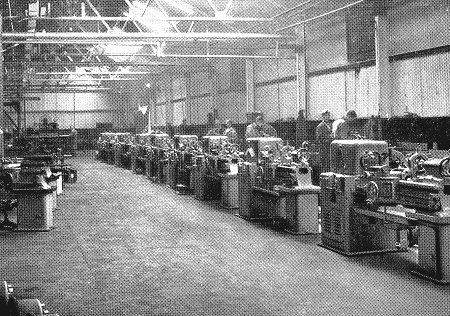 |
A line of completed Harrison
Lathes awaiting despatch.
From the Christmas 1947 edition of the staff magazine
"Yuletide". |
 |
Return to
the
previous page |
|